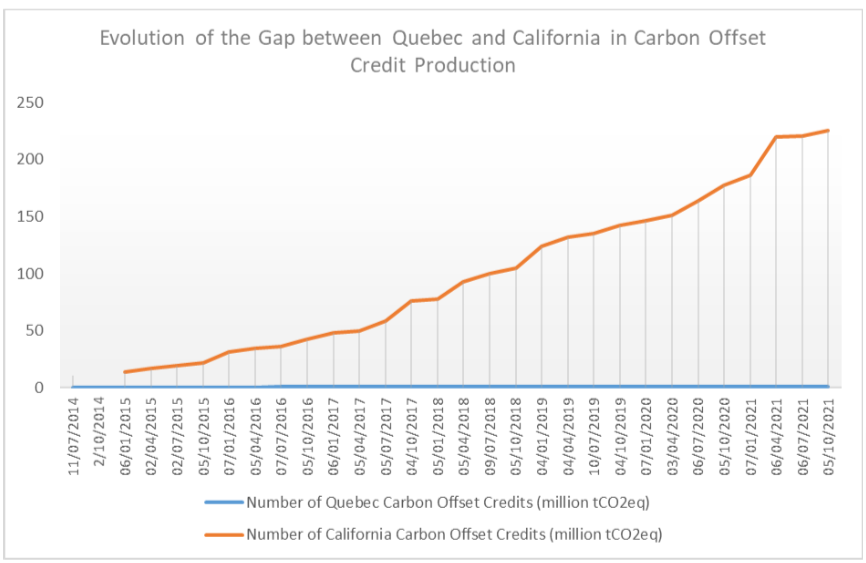In 2013, Quebec implemented a cap-and-trade system to fight climate change, the Système de plafonnement et d’échange des droits d’émission de gaz à effet de serre (SPEDE). In 2014, this system was merged with California’s within the Western Climate Initiative (WCI), creating the largest carbon market in North America.
Through a regulatory cap on greenhouse gas (GHG) emissions, the SPEDE aims at pushing Quebec’s largest emitters to undertake projects to reduce their emissions. There are approximately 80 “large emitters” that release more than 25,000 tonnes of CO2 per year. Fossil fuel distributors above the 200 liters annual threshold are also subject to the SPEDE. What assessment can be made of this mechanism? Is its performance optimal for reducing GHG emissions?
How does the SPEDE work?
According to the SPEDE regulation, large emitters must purchase emission rights for the tons of GHGs they emit into the atmosphere. They must therefore file a report every three years that demonstrates the coverage of these GHG emissions by emission rights. One emission right is equivalent to one ton of GHG emitted into the atmosphere.
A portion of these emission rights is distributed free of charge by the government. The rest of the emissions must either be reduced or financially compensated. The financial compensation can be done through the acquisition of emission rights mainly traded and acquired through the WCI auctions.
Another option is to purchase regulated offset credits. These regulated offset credits are the result of a company’s GHG emission reduction project. One such credit is equivalent to one ton of GHGs avoided. The company that has this type of credit as a result of its reduction project can then sell them to emitters looking to buy them.
Quebec is at a disadvantage in the common carbon market
In the Quebec-California common market, regulated offset credits can be traded between the two regions. However, in 2020, as shown in the graph below, California recognized 213 times more of these credits than Quebec. This gap increases year after year. Thus, for the 2018-2020 period, Quebec companies purchased 97% of their offset credits in the California market and only 3% in Quebec.
This graph shows the difference in production of offset carbon credits between California and Quebec under the Greenhouse Gas Emissions Cap and Trade System (SPEDE)
Why such a distortion between the supply and demand of Quebec on this regulatory carbon market?
The types of projects that can be recognized as regulated carbon offset credits in Quebec are fewer in number than in California. In Quebec, only two types of projects have had their carbon offset credits acquired by Quebec companies: the destruction of ozone-depleting substances, now almost all gone, and the destruction of methane in certain landfills. In contrast, California allows many more types of projects, including forestry projects. More than three-quarters of the carbon offset credits purchased by Quebec companies are forestry CO2 sequestration projects carried out in the United States.
The consequences of this distortion: capital flight
The dynamics described in the previous sections result in capital flight to the United States. Every regulated offset credit purchased in the U.S. is money injected into a foreign economy and moves Quebec further away from achieving its 2030 reduction targets. This money encourages companies in the neighbouring country to undertake GHG reduction projects to earn income.
According to estimates from the Ministry of the Environment and Climate Change (MELCC), the average price of these credits has increased from $10.71 in 2014 to $18.50 in 2020. Based on these estimates and the number of offset credits purchased in the U.S. by Quebec companies, the amount of capital sent to the U.S. between 2015 and 2020 can be estimated at approximately 320 million Canadian dollars.
Thus, in order to limit capital flight, it could be relevant for Quebec to allow regulated carbon offset credits from forestry projects carried out in Quebec and to recognize Quebec offset credits from voluntary carbon markets (VCM) verified by credible international programs.

Jean-François Léonard
VP Public & Government Affairs
Author of the article

